Sometimes a car manufacturer will unveil a new model or design concept, and the motoring public will trip over itself in a bid to secure ownership of their marvelous new release. However, sometimes the motoring public will give these new concepts the big “thumbs down.” Such was the case with the Chrysler Airflow, a ground-breaking car that really deserved to be a greater sales success than it eventually was. Today, these are a car that has developed a dedicated following, and good examples are a sought-after commodity. When it comes to rarity, the 1934 Airflow is a car that isn’t seen on the market in huge numbers, but this particular car takes the rarity stakes and turns it up a notch. It represents an older restoration that is located in Plant City, Florida. If you would like to become the next owner of this classic Chrysler, you will find it listed for sale here on eBay, where bidding has reached $12,005. At this price, the reserve has not been met. I need to take the opportunity to say thank you to Barn Finder Ikey H for referring the Airflow through to us.
It isn’t clear when the restoration of the Airflow was undertaken, but it still looks nice today. The paint, which is similar in appearance to Prairie Gray, has a nice shine to it, and the car appears to be rust-free. However, it does appear as though there are a few imperfections visible, including sanding marks in a few places below the paint. The most notable of these is on the passenger side rear fender. The external trim and chrome present nicely, as does the glass. The Airflow represented one of the first cars where the design was influenced by work in a wind-tunnel. The design group behind the Airflow constructed a basic wind-tunnel and tested a number of then-current offerings. To their surprise, not only did they find that those cars were remarkable aerodynamically inefficient, but some of them performed better with their bodies fitted to the chassis backward. It was then that they developed the styling for the Airflow. Sadly, it was not a design that the buying public seemed willing to accept. There were also some major question marks about the quality and durability of the newly introduced Airflow, and this had a significant impact on sales volumes. Sales results were a long way below expectations, and in spite of ongoing styling changes in a bid to win over the buying public, the Airflow concept only remained a part of the Chrysler range from 1934 until the end of 1937.
It’s when you lift the hood of this particular Airflow that you find a significant point of difference when you compare it with its siblings. Being a Canadian built car, it doesn’t feature a flathead straight-eight engine, but a 241.5ci flathead six, as found in the DeSoto model. This engine produces 100hp, which is sent to the rear wheels via a 3-speed manual transmission. The owner doesn’t provide any information about how well the car runs and drives, but the presentation throughout the engine bay is very clean. Being a Canadian car brings an added touch of a rarity because while Chrysler in America produced 10,839 cars across the entire Airflow range in 1934, Canadian Airflows accounted for a mere 445 cars. The former figure represented a sales failure for Chrysler, so it is hard to imagine how that latter figure looked in the company’s boardroom at the end of 1934. A bit of research reveals that of the original 445 Canadian cars, only 3 examples are known to exist today.
The interior of the Airflow has been nicely restored, and it’s hard to find anything much to criticize with the car. All of the upholstery and the carpet are in first-rate condition, while the Art Deco touches on the dash add a touch of class to the car. There are a couple of minor paint chips visible on the dash, but that really is about it. I guess that this is one of the frustrations with cars like the Airflow. If the public had been able to look beyond the exterior styling, they would have found a truly beautiful interior that made occupants feel like they were living in the lap of luxury.
The combination of low build numbers and a low survival rate makes this Canadian Chrysler Airflow a rare vehicle today. Rarity doesn’t always translate into high values, but the Airflow performs reasonably well in this area. Prices in excess of $35,000 for nice examples are pretty common, and while this one is a nice car, it doesn’t appear to be perfect. However, its relative rarity is an attribute that should stand it in good stead in the market today. It will be interesting to see what the car finally sells for and whether we have any readers who would like to be the next owner of this classic.
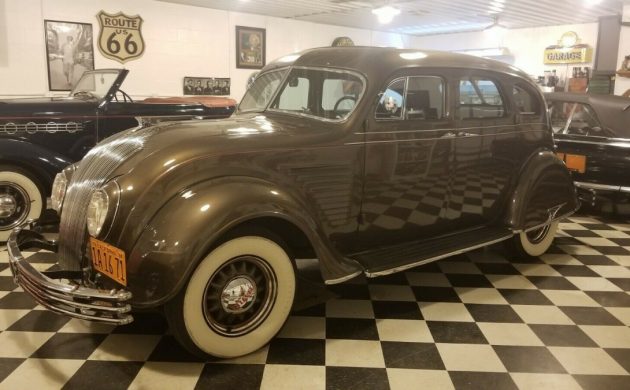
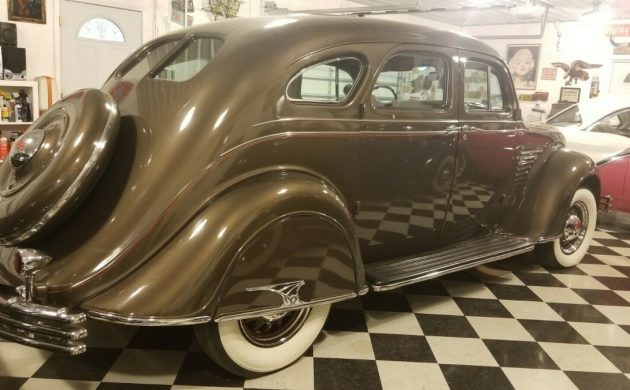
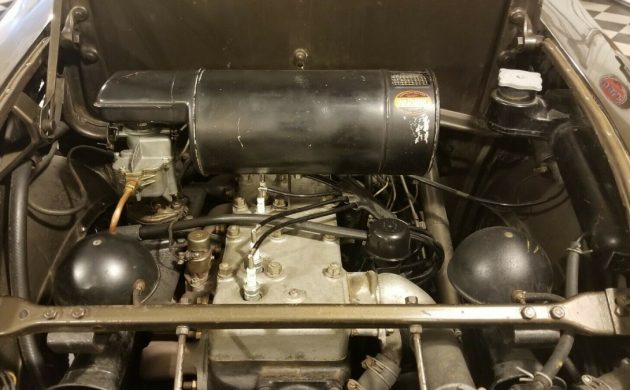

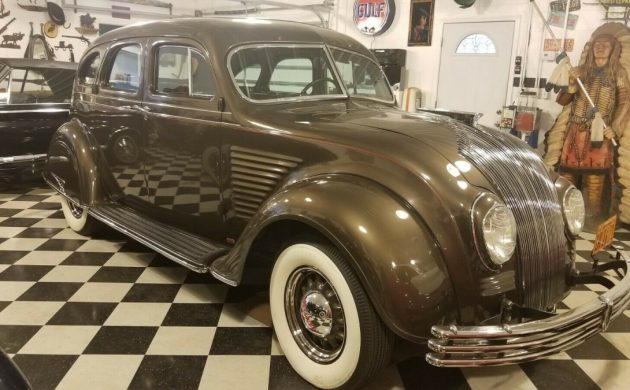
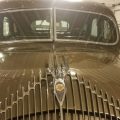
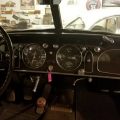



The CY was essentially a DeSoto Airflow with a Chrysler grill and dashboard. The DeSoto models were stubier than the longer and sleeker Chrysler models. They were also of course 6 cylinder instead of 8 cylinder.
I admit I don’t know a lot about these but would that not make it less desirable?
I think you’re right about the 6 being less desirable, but then I don’t know how the rarity of the CY would factor in. I can’t afford it in any case, but I’d sure want an Airflow expert to take a look before I bid. Might be a challenge to find a comp for pricing, also it’s possible that a CY could be put together from a DeSoto and some Chrysler trim! Not that I’m accusing the seller of anything. Cool car, and an interesting piece of history. Looks like this same vehicle was on eBay for $40 K OBO in 2017. https://bringatrailer.com/2017/06/12/one-of-445-canadian-sixes-1934-chrysler-cy-airflow/
In the mid 70s, there was a Canadian version, I don’t know the year, approximately two miles from my home. I knew it was rare, and had the opportunity to buy it, but it didn’t ring my bell.
The colour was similar to the one listed, and wouldn’t have taken much to get it running. The only other one I am personally aware of, is a restored Canadian built car at the PGE railway museum in Squamish, BC.
The design had a lot of unique features, and reeked of art deco, and I appreciate the design of the car a lot more than I did then. Maybe it is because of all the bubbles on the highway now, I don’t know.
I wouldn’t mind owning one now.
It looks like a nice restoration.
Bob
Another one of the less appreciated cars at the time. I think it has character and it’s something you’re not going to see often. I like it.
A rare and historically significant car with out a doubt but given the front end styling, it’s not surprising it didn’t sell very well. Even today it’s pretty homely. Love the interior and color, very plush for the time.
It has an overgrown VW Beetle look to it, they sold real good!
My first thought was a Divco milk truck.
You’re right, I can see that, too.
Very few cars exude art deco styling like Airflows IMHO. An interior like nothing else on the road at the time. Living room sofa-type seats with soft touches and curved trim really show an attention to detail. Beautiful, rare, and highly desirable.
Great write-up, Adam!
Wonder how this Canuck car ended up in Florida ?
I knew about Airflows but not Canuck ones.
Good write up. Wonderfull car.
Much Canadian heritage ends up in American hands due to the fact that wealth is concentrated in the USA as opposed to CANADA if we are to examine wealth per capita across the continent. Moreover, the US population is infinitely bigger than CANADA’s pop.
Lastly, the USA gave us car culture by comparison with Canadian car culture. Collectors in the USA are also much more sophisticated at collecting given their markets for collectables. eBay USA is a major worldwide venue for collecting as opposed to backwaters like CANADA.
And in terms of restoration work it is best to keep old treasure that has been restored in a warm climate with little moisture.
Bob
Backwaters?, sorry Bob, but as a Canadian, I find that insulting.
Robert,
Arithmetic observation: The population of the US is about 9 times greater than that of Canada (9.1689 times according to one source.) That is hardly infinite!!
My observation: If a Canadian collector wishes to sell one of his cars, and an American (or any other nationality) offers top dollar, why should that be a problem? The main consideration here is that the check clears. :-) :-)
I think these are actually beautiful. If I had the room, I would bring her home. She needs a loving owner.
I once saw a rare Airflow convertible. Absolutely stunning.
I read an article years ago by an old ex-Chrysler engineer who said that the prototype was shown at the NY show against the wishes of the production guys, as it was not ready at all. But, contrary to what we’ve heard, it caused a sensation, and people were insisting on placing orders and writing checks, so the car was quickly put into production without, among other things, the independent front suspension they’d been working on. Of course there were problems once the cars hit the road, and the Airflows suddenly got a bad name for reliability.
Henry Ford notoriously used the buying public as his road-testing crew, but at his prices he could afford some grumbling from a few customers. But with Chrysler’s reputation, and especially their prices, nobody was going to cut them any sort of slack.
As I said, this is hearsay, remembered from an old-cars magazine read many years ago … but it had the ring of truth, and could probably be either verified or debunked, if a person had the resources.
This is a beautiful car but in my opinion it should be in a museum instead of someone’s private collection!!! This car is in really good shape and was an innovative car way ahead of its time!!
The Chrysler Airflow Six (CY) was a one year model. Should also point out that Chrysler of Canada also built and sold the DeSoto Airflow Six, Chrysler Airflow Eight, and Airflow Imperial Eight for the years 1934 to 1936. The Airflow Eight (CU) used the Airflow Six body with a longer nose for the bigger engine. The Imperial (CV) version moved the rear axle back to get rid of the small dog leg in the rear doors.
Grand total production for the Airflow in Canada for the 1934 model year (all models) came to 1,175. Production dropped in 1935 and 1936, with the 1936 models apparently built at the Windsor Truck plant. Total 1936 Airflow production (S2, C9, C10) came to 65 cars.
The 1937 Chrysler Airflow (C-17) was imported from Detroit.